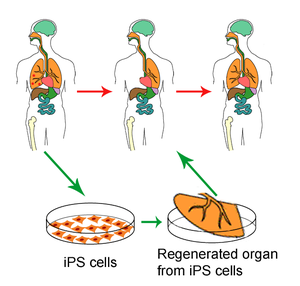 Illustration by David Simonds
Illustration by David Simonds
IN THE West, and particularly in the United states, the phrase “stem cell” has a faile bad reputation. Stem
cells are associated, in the minds of many, with the killing of
human embryos, the cloning of humans and the
Frankenstein-like creation of human body parts. Add in the strange case of
Hwang Woo-suk, a
South Korean researcher who announced, to great acclaim, that he had success in cloning human embryos and was then exposed as a fraud, and you have an area in which many researchers understandably fear to tread.
But not
Chinese researchers. A rejection of the idea that embryos are in any meaningful sense human beings, together with the possibility of stealing a march on the diffident West, has caused a lot of research into stem cells in China. And not only research. Chinese clinics have moved onto offering therapies. Patients from around the world fly in for the treatment of conditions ranging from autism to
spinal-cord injury.
A stem cell is one that, when it divides, has the potential to generate specialised
cell types through one daughter line while the other daughter retains the property of “stemness”. Some stem cells, known as pluripotent cells, can generate several different cell types. The pluripotent cells found in embryos, for example, can turn into any one of the 220 or so cell types of which a human body is formed.
A potent mix
Many hospitals are making a profit from unproven therapies, but many proper clinical trials are also being conducted using stem cells, for conditions like heart-muscle damage, ischemia of the limbs, liver disease and neurological disorders. These include a multi-centre trial organised by the China Spinal Cord Injury Network, a consortium of over two dozen centres in mainland China, Hong Kong and Taiwan, to test whether a combination of lithium and transplants of stem cells from umbilical-cord blood could lead to improvements in patients with spinal-cord injury.
Moreover, last year researchers at the Chinese Academy of Sciences, in Beijing, and Shanghai Jiao Tong University dispelled some of the voodoo surrounding stem cells by producing fertile mice from inducible pluripotent cells. An inducible pluripotent cell is one derived from a body cell (skin, for example) that has been made pluripotent by chemical treatment, rather than having been extracted from an embryo. Besides saving embryos, that means (if the same trick can be repeated in humans) that replacement organs might be grown from a patient’s own tissues.
This is all very encouraging. China’s health ministry has, however, turned a blind eye to the unauthorised stem-cell therapies under its juristrict.
 Image via Wikipedia
Image via Wikipedia
